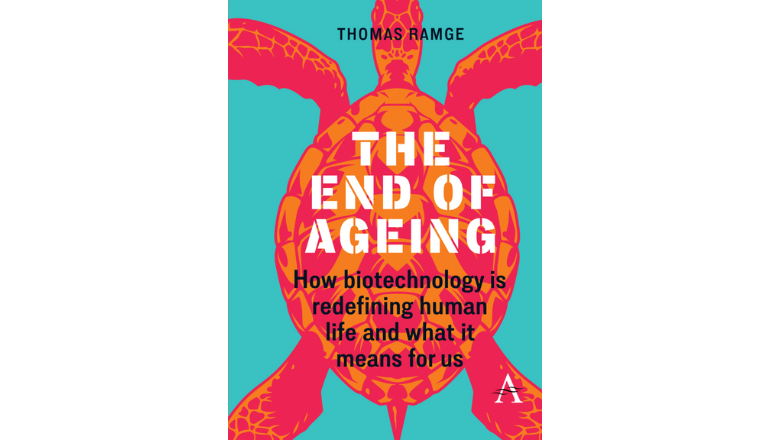
The below post is an edited compilation of excerpts from the new book, The End of Ageing, by Thomas Ramge (Anthem Press, July 2025), and entertaining food for thought for our members.
In the last 150 years, the average life expectancy globally has more than doubled. In the United States, the life expectancy of a child born in the late 19th century was about 40. That’s hardly more than in the Stone Age or the Middle Ages. U.S. Americans today have a statistical life expectancy of about 80 years, French and Italians 82, and Japanese more than 84 years.
The enormous increase in average life expectancy was achieved above all because science, technology and culture systematically combated the causes of early death, particularly infant mortality and infectious diseases. These great successes have a downside. Because we have succeeded so well in the past century and a half in systematically eliminating the formerly relevant causes of death, we are now suffering more and more from those that have evolutionarily been designed as degeneration in the human body. We buy the longer life that hygiene and medical progress allow us with suffering in old age because medicine simply cannot stop degeneration—the increasing accumulation of damage in the cells in the later decades of life. To put it more bluntly: We have only slightly slowed down aging but significantly prolonged dying.
This is precisely where longevity medicine switches to attack mode. It looks for an in-depth understanding of the aging and degeneration processes in the body. It defines this accumulation of cellular damage and physical loss of function due to advancing age as a disease in its own right, and then looks for ways to cure the deadly disease called death. If this scientific paradigm shift finds full political and social acceptance, the research and development game will change radically on a legal and economic level.
Because today, aging and death are not legally considered diseases but consequences of a wide range of age-related diseases, U.S. and European drug authorities do not approve drugs against aging and death, per se. Therefore, traditional pharmaceutical companies have no direct incentive to invest in developing longevity therapeutics. But others are more impatient and less risk averse.
Men in the second half of their lives who have become incredibly rich through information technology and digital platforms are investing heavily in longevity.
These others are, unsurprisingly, often men in the second half of their lives who have become incredibly rich through information technology and digital platforms in the first half of their lives and are usually not known to suffer from low self-esteem. Jeff Bezos, co-founder of Amazon, has backed Altos Labs, a company exploring cellular reprogramming to restore aged cells to a youthful state. Google co-founder Larry Page has supported Calico, an Alphabet subsidiary focused on understanding age-related molecular pathways and developing longevity therapeutics. Peter Thiel, ever the contrarian, has channeled millions into Unity Biotechnology (also backed by Bezos), which targets senescent cells—dysfunctional cells that accumulate with age and drive inflammation.
Meanwhile, OpenAI CEO Sam Altman has placed a major bet on Retro Biosciences, which aims to extend human lifespan by 10 years through cellular rejuvenation, autophagy enhancement, and blood plasma-based therapies. Mark Zuckerberg and Priscilla Chan, through the Chan Zuckerberg Initiative, have pledged billions to fight age-related diseases by funding advanced biomedical research in cell aging and regenerative medicine. Even Vitalik Buterin, the shy European Ethereum co-founder, has invested in SENS Research Foundation, an organization dedicated to reversing aging at the molecular level.
Among the usual suspects, only long-time philanthropist Bill Gates and Elon Musk seem to have different priorities. Asked about immortality research on Reddit, Gates replied, “It seems pretty egocentric while we still have malaria and TB for rich people to fund things so they can live longer. It would be nice to live longer though I admit.” Musk, father of many, is worried about society’s ossification by declining birthrates.
Gates and Musk aside, tech billionaires’ attitude toward longevity medicine unsurprisingly very much mirrors Silicon Valley’s digital ethos: moonshot thinking, rapid iteration, and a willingness to challenge scientific dogma. Whether their investments will translate into tangible life-extending therapies within the investors’ lifetimes remains uncertain, to say the least.
The longevity field has seen its share of hype cycles, where expectations outpace reality. Skeptical physicians, often highly competent, usually consider the promises of longevity researchers and founders to be completely exaggerated. But venture capitalists with a lot of biomedical expertise are betting ever higher sums on scenarios with humans becoming older than giant tortoises—or virtually immortal.
Spoiler alert: very likely, neither you nor I will see such changes, nor will the scientists working on life extension therapies truly deliver on its bold promises. Even if we had a fully functional anti-aging therapy today—one that could extend human lifespan by, say, 50%—we would still need to wait at least 50 years to prove that it works. Unlike conventional medicine, where the effects of a drug or treatment can often be measured in weeks, months or a few years, longevity therapies only reveal their true success over an entire human lifetime. Clinical trials, even accelerated ones, cannot fully account for the complex biological and environmental interactions that unfold over decades. The only way to confirm that a therapy prevents aging in the long run is to observe a population receiving the treatment and compare their lifespan to untreated individuals—a process that inherently spans multiple generations.
Hence, one crucial question in the whole longevity debate seems to be systematically avoided by those pushing for ever longer lives: What would it mean for us, individually and as societies, when many could celebrate their 200th birthdays? Would the groundhog greet us daily and bore us to death in constant loops of repetition? After all, we would have seen and experienced everything multiple times. Perhaps the American writer Susanne Ertz would be right with her laconic remark: “Millions long for immortality who do not know what to do with themselves on a rainy Sunday afternoon.”
Or would longevity finally give us a chance to experience much more than in today’s far-too-short lives? Could we remain curious for several centuries, and could we reinvent ourselves again and again, both professionally and personally? What would longevity mean for our friendships, marriages and relationships with parents and children? Would suicide no longer be an act of selfishness, peer pressure, or confusion, as the sociologist Émile Durkheim described in his paper “Le suicide” (1897, English, “The Suicide”), but the unspectacular default attitude of the long-living toward life? Maybe we could travel to the moon or Mars.
‘Could we remain curious for several centuries, and could we reinvent ourselves again and again, both professionally and personally?’
Meanwhile, one thing is for sure: here on Earth, the long lives of individuals would force us to renegotiate questions of justice and make significant social changes.
Concerning societal aspects, let’s start with something simple: our pension systems and schemes—public and private—are already on shaky ground today. How could they cope if life expectancy continues to grow as linearly as it has for the past 150 years? And how should these systems deal economically and organizationally with medical breakthroughs in longevity medicine?
The problem of overpopulation is much more complex. Birthrates are dropping worldwide, but if no one ever dies, the global population could exceed 20 billion within a few decades. Wouldn’t the logical consequence be that we must ban children, as some well-known sponsors of longevity propose in smaller circles but do not say openly to a broader public?
But this is only the beginning of the problems: Longevity therapies will likely be very costly when introduced. Who can afford them? Will only those internet-platform billionaires who provide venture capital for biotech start-ups have access to progress today? Or would only people in wealthy societies in the northern hemisphere receive free longevity via prescription, while the global South would end up empty-handed?
Tied back to the question of overpopulation: Will only those who opt for longevity interventions or therapies be subject to a (partial) reproductive ban, as the American philosopher John K. Davis, among others, suggests? Regulation for longevity will definitely have a substantial impact on lifestyle. Who enforces the ban on children, and what happens to children born “illegally”? Is a long life without children or a society with few children even desirable? And besides: How innovative and changeable can societies with very many old and very few young people be? Gerontocracy could put humanity in a state of development paralysis.
But here, too, we can design desirable future scenarios. Would many people be willing to act more responsibly today if they knew that they, not only their descendants, would feel the consequences of irresponsible actions first-hand? Or could longevity allow later generations to set off for exoplanets in other solar systems? With spacecraft propulsion technology available today, the flight there theoretically would take 100,000 years, as Harvard astronomer Avi Loeb calculates. In the future, this should hopefully be much faster.
Thomas Ramge is a non-fiction writer, keynote speaker and podcaster, concentrating on AI, innovation, longevity, geopolitics and geoengineering. He lives in Berlin.
Illustration credit: Shutterstock/ClareM













